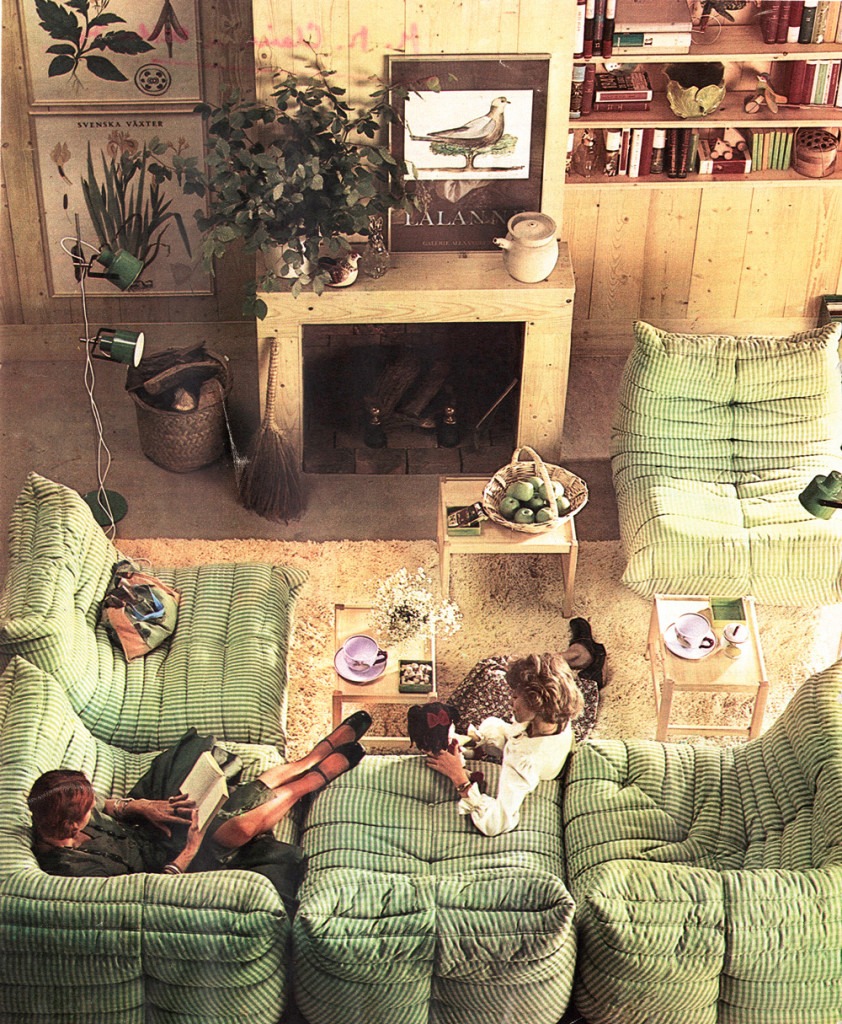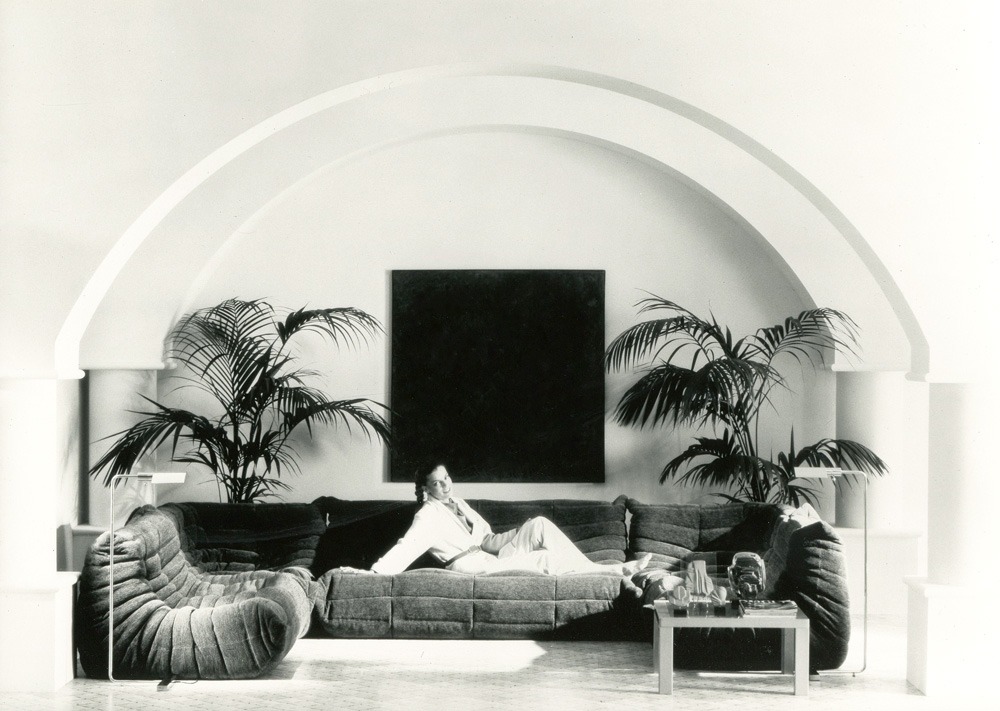They helped to overcome conventional furniture and became a symbol for a relaxed, less bourgeois life: The Togo sofa elements by Ligne Roset celebrate their 50th birthday.
By Thomas Wagner.
It was a revolution, albeit a minor one. It happened at the close of the 1960s and the start of the 1970s. The impulse was sparked in student halls of residence and shared flats, and the sofa and bed were particularly targeted. It was time to put an end to the well-behaved, bourgeois, and hostile discussion on a hard bench or a firmly upholstered canapé. To loud pop music just above the floor, the long-haired children of Marx and Coca-Cola lounged, lounged and lolled on a flokati meadow. There was no money for traditional furniture anyway, so grandmother’s old three-piece mattresses were converted into an anti-bourgeois seating landscape on which one could collectively feel part of a new bohemia.

Liberated from Conventions
Simultaneously, furniture design abandoned black and brown cosiness and focused on mobility. Lightweight plastic chairs and inflatable armchairs, as well as colourful and interchangeable sofas and seating environments, were created. Living magazines all over the world promoted an unconventional way of life. While the “Flintstones” represented the comforts of the Stone Age, Verner Panton’s “Visiona” and “Living Tower” made the retreat into the colourful living cave (long before a Generation Z) the emblem of a relaxed work-life balance. “Fantasy Landscapes” held a lot of love energy; fantasy aspired to power, and utopias of another existence appeared to be within reach.

Togo Celebrates its Birthday
Designer Michel Ducaroy described his Togo sofa as “a toothpaste tube folded like a stovepipe and closed at both ends.” Togo, which launched in 1973, is celebrating its 50th anniversary as a fashion icon of the 1970s. People, it appears, like to change their position in space during periods of upheaval. Famous fashion companies used the Lümmel sofa in their lookbooks last year: Coach had Hari Nef balance on it in New York City, and Zara had model Grace Hartzel flatten herself in a camouflage dress on a leather-covered togo.

New Customs, New Materials
One factor was the shift in values. The other was the development of new materials (foams, wadding, thermoformable plastics) and production methods. In the 1960s, they inspired Jean Roset and Michel Ducaroy to create floor-level seating components. They produced models who were more or less successful, such as Koufra, Kali (made famous by Claire Brétécher’s comic strip “The Frustrated”), Safi, and Marsala. However, designer Michel Ducaroy rose to prominence with the “seat cushion” Togo, which debuted at the Salon des Arts Ménagers in Paris in 1973.
Although many people scoffed at first, the model’s casual silhouette and wrinkled cosiness that encourages you to rest, which the model still exudes today, has not only won over hippies and dropouts. Because the design was not too radical, Togo became a brand bestseller rather than a niche product. To date, 1,500,000 copies have allegedly been sold in 72 countries. Thus, the tale of the seating revolution ended in a new civility.

More on ndion
More articles on the topic of design
Share this page on social media:

